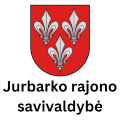India’s containerized trade growth slowed to one percent in the second quarter (down eight percent on the same period last year), according to Maersk data.
Maersk attributes the drop to a cocktail of international factors such as slowing trade growth and growing trade tensions – coupled with domestic factors like rural consumer distress, tightening liquidity and a slow-down in key manufacturing sectors. Combined, these triggers impacted the country’s economic activity, slowing overall import-export growth.
West India delivered the highest growth with imports growing at four percent and exports at 11 percent. North India delivered one percent growth in imports and a decline of nine percent in exports. South India registered one percent import growth and two percent export growth, while East India recorded two percent growth in imports and a decline of one percent in exports.
India’s exports to China declined by 20 percent, led by a reduction in demand for India-made textiles and apparel, which were large export commodities in the corresponding period last year. Imports from China contracted more, by 22 percent.
The increasing economic cooperation between India and Saudi Arabia led the latter to emerge as one of India’s strongest export partners in the second quarter, growing by 74 percent, with vegetables and tiles, stone and glass exports from India leading this growth.
Steve Felder, Managing Director, Maersk South Asia, said: “The overall deceleration of trade growth reflects a broad-based slowdown across key economic sectors. Amidst increasing global volatility, a slower local economy and the U.S.’s withdrawal of preferential access for certain Indian products, India’s import-export trade is expected to continue to face headwinds in the coming months.
“However, the Commerce Ministry’s recently proposed export promotion scheme, supported with a production-based support scheme, coupled with a weaker rupee, is expected to boost Make in India and benefit multiple industries. Additionally, India has a great opportunity to position itself as a beneficiary of the global trade tensions, provided it can attract investment, move up the ease of doing business index and reduce costs related to logistics.”
India’s overall trade with North America grew 14 percent, and with Europe grew 10 percent. Containerized trade with the Mediterranean countries was flat, primarily due to a two percent contraction in exports.
Whilst India’s export growth with the world stagnated, export growth to North America doubled from the corresponding period last year to 15 percent growth in the second quarter. This was largely led by North India, which delivered an increase of 18 percent this year compared to one percent last year. West and South India also contributed to the overall export growth, while growth from East India shrunk.
A large part of this growth can be attributed to textiles and apparels and metal exports to North America, which rose 14 percent as compared to the same period last year. Indian shrimp exports to North America also contributed. The commodity that saw the sharpest fall in exports to North America is India-made vehicles, which slowed to 11 percent growth from a strong 67 percent growth last year.
While domestic demand for textiles, apparel and accessories from North America grew, commodities such as fruits and nuts, vegetables and foodstuff experienced a weakening demand.
“Additional to all the opportunities that lay ahead for India, the Government also recognizes the importance of global trade which is evident from the creation of a dedicated ‘Logistics Wing’ that will integrate and enhance the numerous elements of the logistics value chain,” says Felder. “That coupled with adoption of new technologies such as blockchain and artificial intelligence across the logistics network, and concerted efforts towards the improvement of infrastructure at ports and roadways, will ensure last mile connectivity for farmers, micro, small and medium enterprises and small businesses. All these factors combined can help in driving economic growth and trade competitiveness of India.”
THE MARITIME EXECUTIVE




.jpg)






